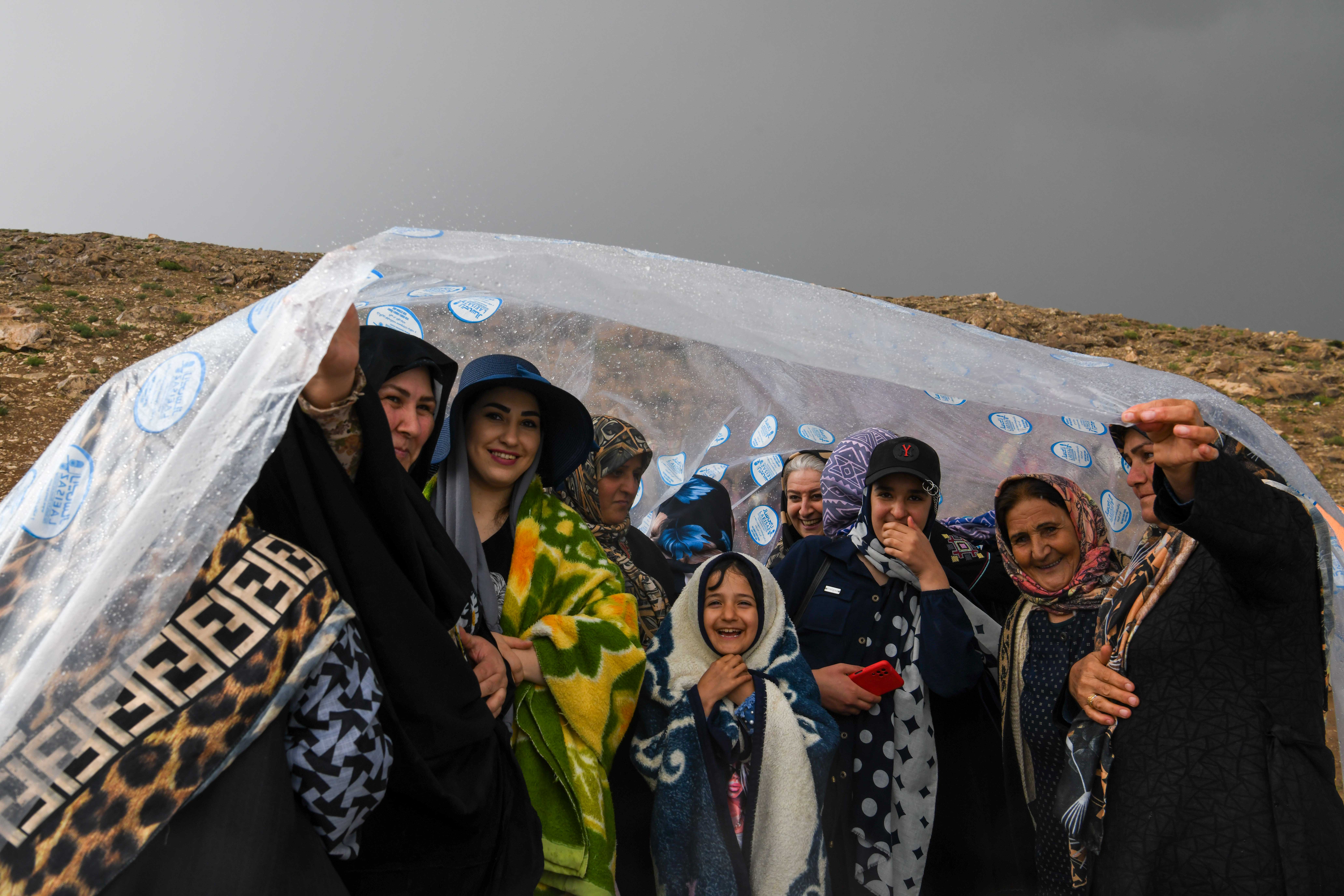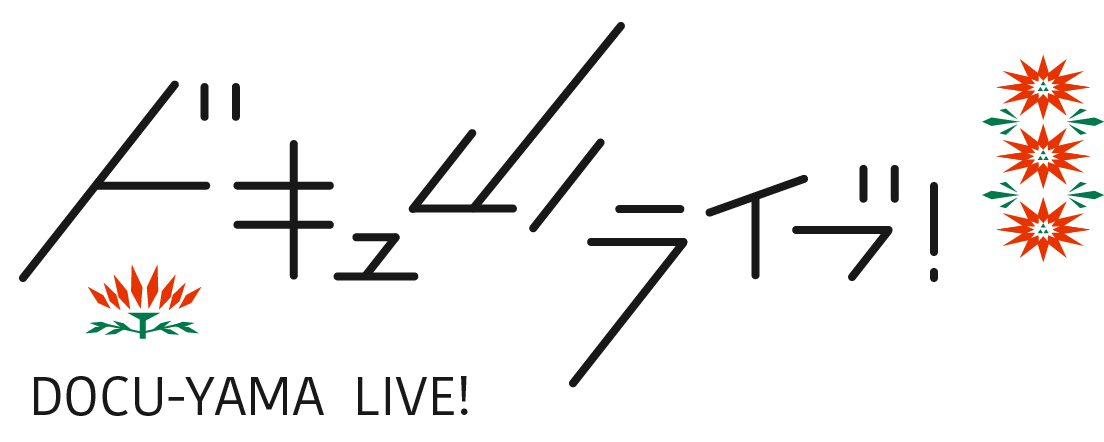
She stares straight at the camera, as she says: “Maybe she’s been in their dreams. She’s never been in any of mine. I have never uttered a lie. Even if they pour money and gold in front of me, I won’t lie. She never appeared in my dream to ask why I hadn’t shown up and danced.” All no-nonsense with two dollops of spice.
Hakishka (2024), co-directed by Narges Judaki and Iman Paknahad, documents the annual traditions exclusive to Muslim women in Pir Kandi. The village lies in the Khoy County, a small Iranian territory in West Azerbaijan near Turkey and Armenia. Every year, a self-organized group hosts picnics at the valley of Nana Hill for around a hundred guests. Men are forbidden. The women and their children trek up a barren hill to greet the ruins of a modest home, its remaining stone walls covered in graffiti. They tie their wishes to leafless trees, bow their heads in contemplation, and toss sand over their ribbons once they’re finished praying.
The afternoon ebbs as they dance and sing in a circle. In one shot, a woman stands in the center of the spinning maelstrom. A bushel of foraged greenery is tucked underneath her right arm as she waves a purple scarf with her free hand. Around her, the other women jump in and out of quasi rap battles sans the competition, clapping and cheering for one another.
Legend has it that an unnamed Christian woman died and was buried by her father in the springtime at Nana Hill. Ever since, for at least four generations, the women of Khoy have offered food and tea to her each year on days without rain, seeking to have their wishes granted through self-divinations. In one anecdote, a woman forgoes her duties at the wheat harvest and goes to sleep. She walks out of a dream holding a baby, following the instruction of two mysterious ladies. Ever since then, she’s never miscarriaged or helped out at wheat harvests.
The women’s devotion to the pilgrimage is as strong as their love for music. Besides the tradition at Nana Hill, Judaki and Paknahad also capture the women at their homes launching into laidback improv sessions atop swathes of Islamic patterned fabrics. They beat a hollow drum, which has an illustration of a red cat-eyed woman on its membrane, warbling ghazals, popular songs, and original ad-libs upon the requests. Their lyrics are baubles such as:
My morning resembles a stack of flowers
Your brows and moles resemble the kohl tube
If I glance at her corset,
I will be king of the land…
Feizeh, one of the few women named in the film, is a singer and drummer. Her husky voice, light and dolce on the undertones, tahrirs through lustrous heartbreaks. When her voice falls short at the end of one stanza, she excuses her breath control with a smile.
City dwellers require alcohol and entry fees to let loose on the dance floor. These women do it on own in their courtyards or out by the dirt depression before the hill, their tinny speakers and the claps of their compatriots as a rhythms.
During the Q&A session that followed their YIDFF premiere, the co-directors attested that the women of the village themselves approached the filmmakers to document the Nana Hill pilgrimage. Paknahad, a man, conducted some interviews with the women while Judaki, of the feminine persuasion, filmed the cafe with only men inside.
This particular sequence is the second scene in the documentary, where the men are asked about what the women do during the tradition. They answer without reservations or judgement. One man is unperturbed as he says, “We allow our women to freely go to nature and dance.”
Iran’s ban on women singing and dancing in public goes unaddressed directly within the documentary, which opts for oblique references. For instance, within the dancing sequences, a few women forgo the hijab. At the Q&A, after mentioning that the film had been delayed for two years due to political conflict and assassinations in the country, the filmmakers didn’t answer when asked whether the film would be distributed in Iran.
Not every woman in the village goes to Nana Hill, but the ones that do are steadfast in their commitment to show up and have fun. Smartphones and social media content irk the elders. They’re either calmly telling off the uninvited men lingering atop the hill with cameras or batting nary an eyelid when the act is done by other women.
Later on, close to the ending of the film, a sudden onset of rain hammers down on the depression, interrupting the pilgrimage. The women group together in small huddles. A few hold plastic tarpaulins above their heads, crouching down. Some quickly pack up the food and prepare to retreat to the safety of their cars parked by the hill. And there’s the troupe that hold their heads high and continue dancing, laughing and whooping as loudly as they did underneath the sun.
I wish I had the knowledge of Muslim and Iran cultures to precisely paint a picture of the music and dances utilized by the talented subjects of the documentary. Regardless, Hakishka remains a compelling watch for its devotion and passion to Pir Kandi’s intangible heritage and subjects—a first of its kind within the English-speaking world, intertwining contemporary ethnography with a journalistic narrative flair.
Hakishka is a co-directed documentary by Narges Judaki and Iman Paknahad within YIDFF 2025’s New Asian Currents. Catch it screening in Yamagata, Japan, until the 16th of October.
Alyssandra Maxine
![ドキュ山ライブ! [DOCU-YAMA LIVE!]](http://www.yidff-live.info/wp-content/themes/yidff-live_2017/images/header_sp_logo1.png)

